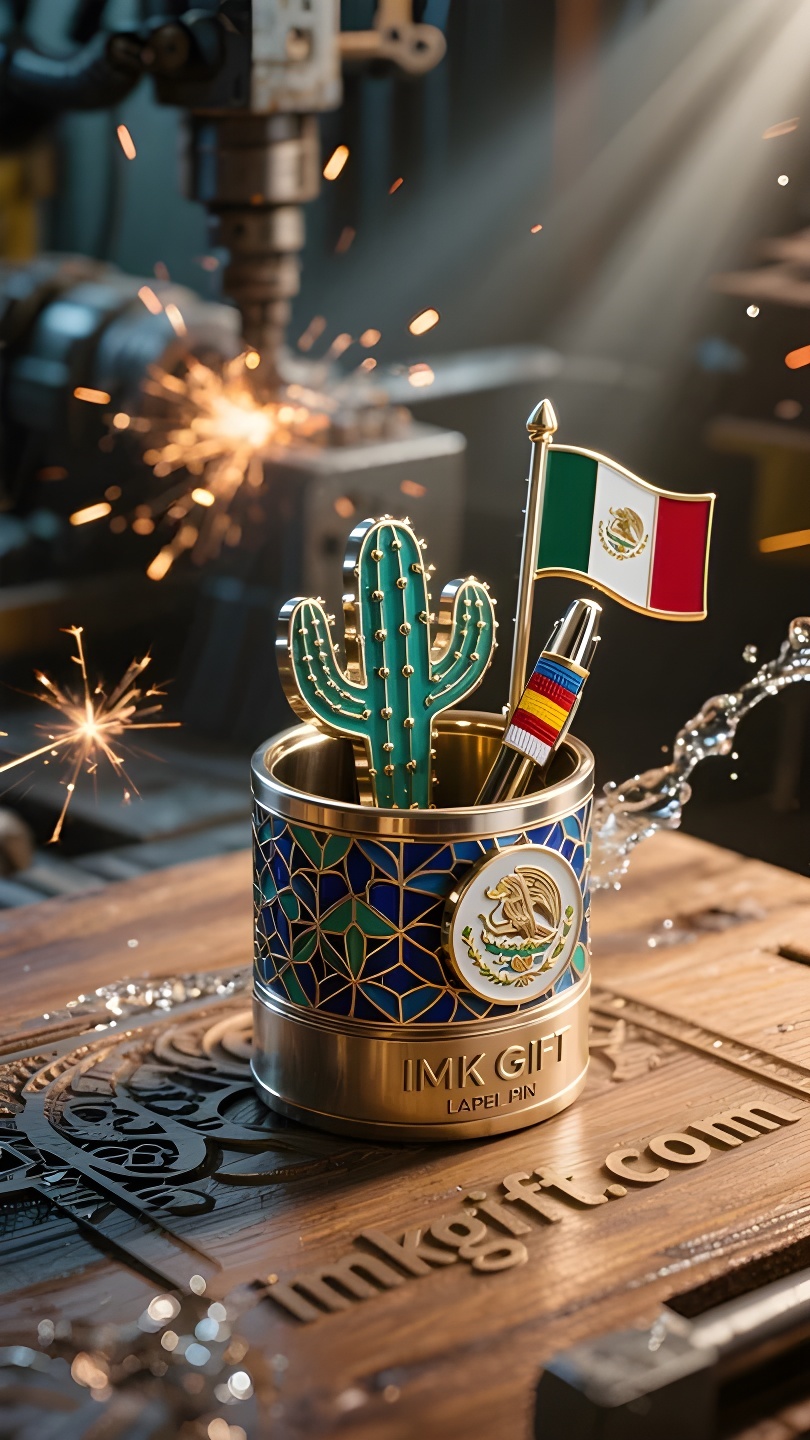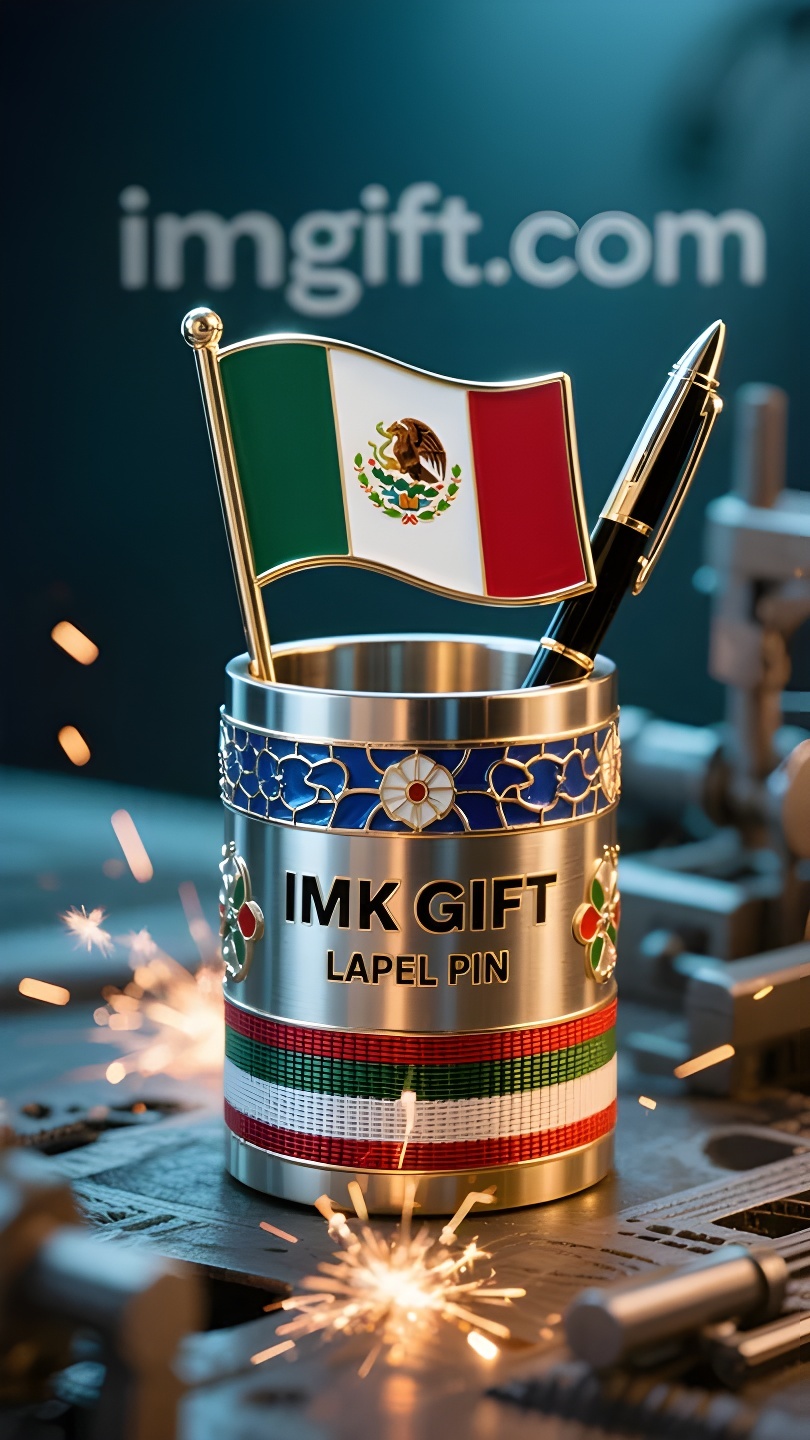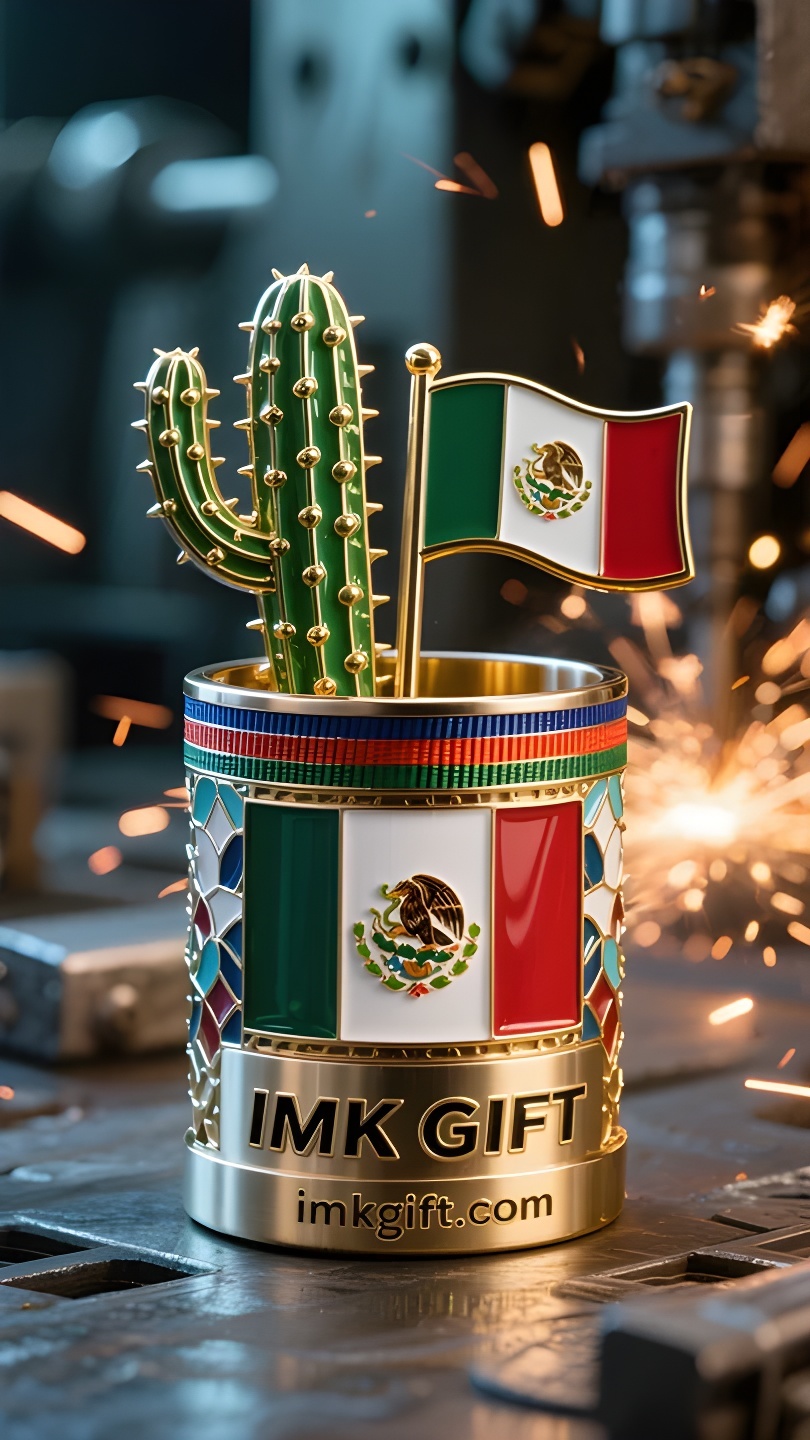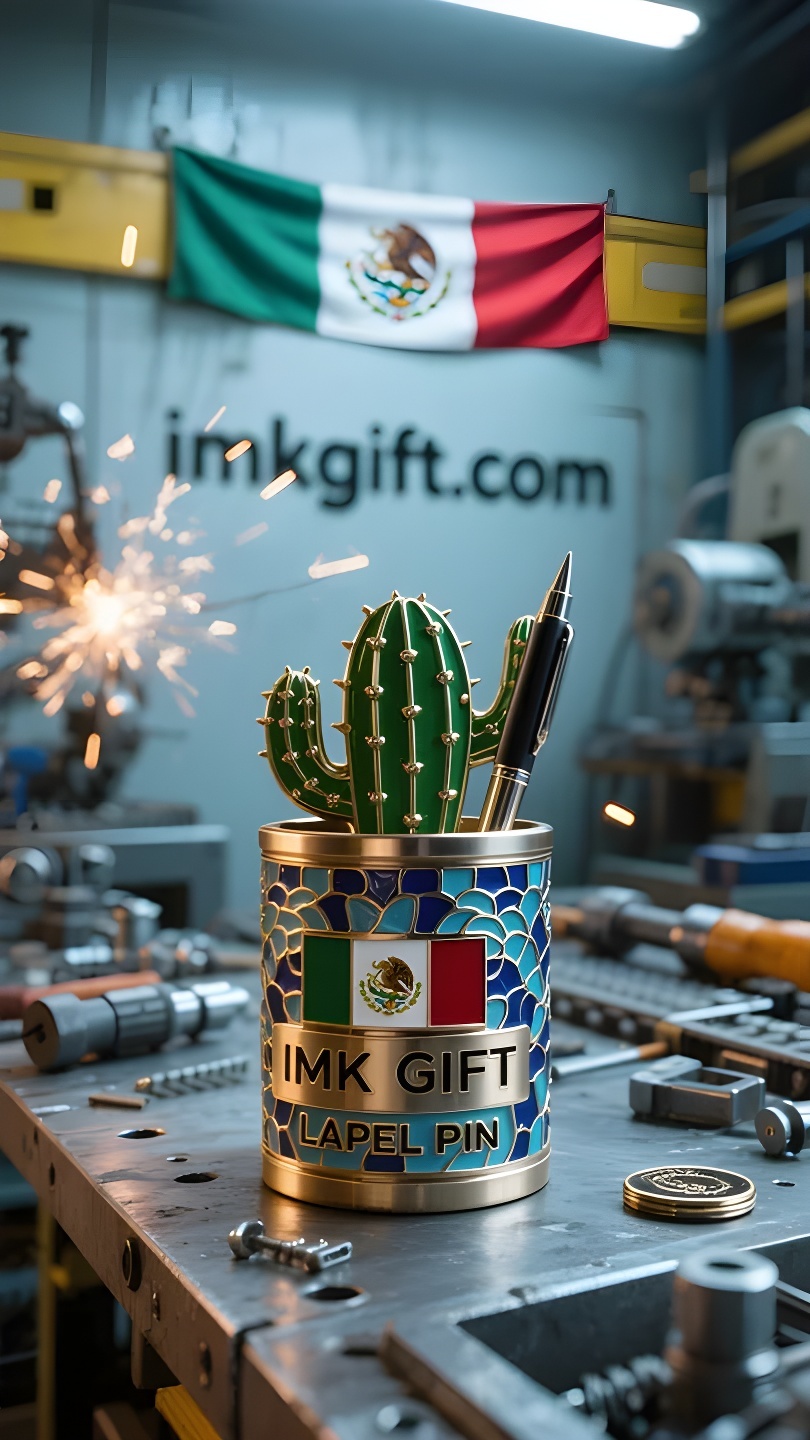in986-Portalápices-de-cactus-y-bandera-nacional-Escribiendo-esperanza-en-el-desierto
▼
Septiembre es el mes que simboliza el espíritu de la independencia mexicana. Al contemplar el cactus que se alza sobre la roca en el centro de la bandera mexicana, siempre se puede pensar en el grito de la Guerra de Independencia de 1810. Esta planta, que crece en tierras áridas, salino-alcalinas, se ha convertido en un símbolo de la tenacidad de la nación mexicana, con sus raíces penetrando la dura roca para absorber nutrientes. En los escritorios de los mexicanos modernos, el portaplumas de arcilla con forma de cactus perpetúa este espíritu. Ya no es un objeto de sacrificio arrebatado por un águila, sino un contenedor que alberga creatividad: cada pluma insertada en él recuerda al escritor: el verdadero crecimiento comienza con la adversidad. Así como el cactus transforma el agua limitada en abundante vitalidad, los creadores también pueden usar las raíces de su voluntad para romper las barreras de la realidad cuando los recursos escasean. El escritor mexicano Octavio Paz dijo una vez: «Nuestra historia son las espinas del cactus, que protegen el fruto y perforan la ilusión». Al tocar las irregulares líneas de cactus en la superficie del portaplumas, parece tocar los confines de la memoria nacional. Los pioneros que escribieron sobre la libertad con plumas durante la Guerra de la Independencia y los jóvenes que hoy escriben sus sueños en los teclados, todos interpretan la misma filosofía de supervivencia: florecer con terquedad en lugares aparentemente imposibles. Este septiembre, usemos el portaplumas de cactus como ancla para recordar la historia plasmada en la bandera nacional y escribir un capítulo tenaz de la nueva era; después de todo, las esperanzas más ardientes suelen nacer en la tierra más árida.
September is the month that symbolizes the spirit of Mexican independence. When people gaze at the cactus standing on the rock in the center of the Mexican flag, they can always think of the cry of the War of Independence in 1810. This plant, which grows in barren saline-alkali land, has become a totem of the Mexican nation’s tenacity with its roots penetrating hard rock to absorb nutrients. On the desks of modern Mexicans, the cactus-shaped clay pen holder is continuing this spirit. It is no longer a sacrificial object seized by an eagle, but a container that carries creativity – every pen inserted into it reminds the writer: real growth begins with adversity. Just as the cactus transforms limited water into abundant vitality, creators can also use the roots of their will to break through the barriers of reality when resources are scarce. Mexican writer Octavio Paz once said: “Our history is the thorns of the cactus, which protects the fruit and pierces the illusion.” When the fingers touch the uneven cactus lines on the surface of the pen holder, it seems to touch the edges and corners of national memory. The pioneers who wrote about freedom with feather pens during the War of Independence and the young people who are typing their dreams on keyboards today are all interpreting the same philosophy of survival: stubbornly blooming green in seemingly impossible places. This September, let us use the cactus pen holder as an anchor to remember the history solidified on the national flag and write a tenacious chapter belonging to the new era – after all, the most ardent hopes are often born in the most barren soil.
九月是墨西哥独立精神的象征之月。当人们凝视墨西哥国旗中央那棵立于岩石上的仙人掌时,总能想起1810年独立战争的呐喊。这株生长在贫瘠盐碱地的植物,以根系穿透坚硬岩层汲取养分的姿态,成为墨西哥民族坚韧不拔的图腾。
而在现代墨西哥人的书桌上,仙人掌造型的陶土笔筒正延续着这种精神。它不再是被雄鹰攫取的祭祀之物,而是化身为承载创造力的容器——每支插入其中的笔,都在提醒执笔人:真正的生长始于困境。就像仙人掌将有限的水分转化为丰沛的生命力,创作者亦能在资源匮乏时,用意志的根系突破现实的壁垒。
墨西哥作家奥克塔维奥·帕斯曾说:”我们的历史是仙人掌的刺,既保护果实,也刺破幻象。”当手指抚过笔筒表面凹凸的仙人掌纹路,仿佛触摸到民族记忆的棱角。那些在独立战争中用羽毛笔书写自由的先驱,与今日在键盘前敲击梦想的青年,都在诠释同一种生存哲学:在看似不可能之处,倔强地绽放绿意。
这个九月,让我们以仙人掌笔筒为锚点,既铭记国旗上凝固的历史,更书写属于新时代的坚韧篇章——毕竟,最炽热的希望,往往诞生于最荒芜的土壤。
▼
Contact Us
📞 Tel: +0086-760-85286839
📧 Email: sales3@imkgift.com








